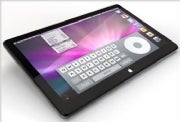
by Francesca Levy
Thursday, August 27, 2009provided by
Which of the globe's workers fatten their wallets most?
Residents of Swiss financial center Zurich know that their country has more to offer than world-class chocolate and precision watches. They can now brag that, on the whole, they earn more than anyone in the world. Zurich-dwellers rake in $22.60 per hour in average net pay, according to a wage survey released August 19. The runner-up city is less than 200 miles southwest: Geneva, where jobs pay $20.40 per hour.
Though the Swiss cities provide the most cash to workers, they are not the most expensive locales for employers to set up shop. Laborers in glittering Copenhagen command the highest gross pay, at an average of $32.80 per hour.
Employees in Zurich and Geneva not only take home top dollar, they can buy the most with their earnings. When you factor in local prices, they blow away any other international city in terms of what workers can get for their money.
Working life in Mumbai marks the other end of the spectrum. Because of its $1.20 average hourly wage, the impoverished urban center trails the list of 73 cities compiled in the Prices and Earnings report, released by every three years.
Behind The Numbers
UBS arrived at its rankings by studying the wages, taxes and working hours of 14 occupations across 73 world cities. Schoolteachers have a very different lifestyle in Berlin, where they earn an average of $35,800 per year after taxes, than they do in Bucharest, where the same work nets them only $4,100. A female factory worker brings in $18,200 in Chicago, but less than a tenth of that--$1,800--in Cairo.
To accurately measure each city's quality of life, the researchers looked not only at gross salaries, but what workers brought home after taxes, based on the number of hours typically worked in their city.
To determine how far citizens could stretch this amount, they then calculated the cost of a generic shopping basket, comprising 154 commonly consumed products and services in each city. The basket was priciest in Oslo, at $112.
"The prices of goods are higher in Oslo because it's relatively remote, it's expensive for companies to operate there, and because taxes are high," says Robert Helsley, a professor at the University of California, Berkeley's Haas School of Business.
In Sydney, the same essentials cost a more reasonable $68.50, but the cheapest goods could be found in two Indian Cities: Delhi and Mumbai, where the shopping basket costs $37.60 and $30.90, respectively.
A Parisian can buy 61.3 baskets with their annual net income, but a Peruvian living in Lima can only afford 32.4 with theirs.
To crystallize the meaning of earnings in different countries, the study introduced a contemporary but ubiquitous item to the basked of goods--an iPod Nano. Taking into account pay, taxes and the price of goods, workers in Cairo would have to toil for 105 hours to get their hands on one of the MP3 players, while those in Zurich and New York can pick one up after working for the least amount of time of all the countries surveyed: 9 hours--roughly a day's work.
Europeans Rake In The Most
The list was crowded with European cities: 14 of the 20 wallet-fattening cities were Western European capitals. All four of the American cities that were included in the analysis made the top 20: New York, Los Angeles, Miami and Chicago. But two other cosmopolitan North American cities, Montreal and Mexico City, didn't make the cut--in fact, Mexico City was one of the lowest-earning of all those surveyed, beating only Delhi, Manila, Jakarta and Mumbai in wages earned. The top 20 includes one city each from the Asian and Australian continents--Tokyo and Sidney.
The dominance of European cities in the rankings is partly a function of sample: there are more of them on the overall list. But that's not the only reason. During the earnings periods for which most companies reported--roughly the 2008 calendar year--the dollar depreciated significantly to the Euro.
Switzerland specifically fared well because of its strong financial services sector and small size.
"Industry obviously influences what the overall compensation will be," says Michael Ryan, chief investment strategist for Swiss bank UBS' wealth management unit, which produced the report. "Switzerland tends to have very specialized products, and financial services."
But the tumultuous global economy, whose effect may not be fully reflected in these numbers, may soon knock financial centers like Zurich, Geneva and New York from the top spots. "As we see impact of global financial crisis play out, will that have an emphasis on reordering the list?" says Ryan. "We won't get that from this data. It's too fresh."
Big Pay Packages In Copenhagen, but More Free Cash In Dublin
Even though employers in some cities seemed to offer impressive-looking wages, workers in lower-earning cities often had much more of their checks left over to play with after taxes and other contributions.
Copenhagen had the biggest disparity between gross and net pay; its workforce contributes 46% of salaries to taxes and social security, shrinking the average paycheck from $32.80 per hour to $17.70. Those cashing their paychecks in Munich, Amsterdam, Oslo and Frankfurt give the next-highest chunks of income to the government.
But taxes fund distinct benefits in different parts of the world, so a strict comparison of tax burdens doesn't give the whole picture.
"Tax systems provide very different public services in different cities. In Copenhagen, I'm assuming health care is included in public tax contributions. In Los Angeles it wouldn't be," says Helsley. "Public safety, the quality of the public transportation system, lots of things could be influenced by government spending that would be germane to a person's choice of place to live."
There's no doubt that a sweet compensation package does a great deal to lure workers to any international location. But salary isn't everything. Employers determining where to locate their businesses and workers deciding where to live must consider a lot more. "Looking at just earnings is deceptive," says Helsley. "The same person is not going to locate in Mexico and Helsinki." Just because a city makes the top five, "It doesn't say it's the best place to locate a firm, and it certainly doesn't mean it's the best place to be a worker."
Top 5 World's Best-Paid Cities

AP Photo / Joachim Ladefoged/VII
1. Zurich, Switzerland
Net pay per hour: $22.60
Gross pay per hour: $30.30
Tax and Social Security contributions: 46%
Vacation days: 23
Working time for an iPod Nano: 9 hours

AP Photo/Anja Niedringhaus
Net pay per hour: $20.40
Gross pay per hour: $29.20
Tax and Social Security contributions: 30%
Vacation days: 23
Working time for an iPod Nano: 10 hours

Brasil 2/iStockphoto.com
Net pay per hour: $19
Gross pay per hour: $26.10
Tax and Social Security contributions: 28%
Vacation days: 12
Working time for an iPod Nano: 9 hours

Niall Carson/PA Wire via AP Images
Net pay per hour: $18.70
Gross pay per hour: $22
Tax and Social Security contributions: 15%
Vacation days: 21
Working time for an iPod Nano: 10 hours

AP Photo/ Luxpress/Manuel Dias HA
Gross pay per hour: $22.40
Net pay per hour: $18.20
Tax and Social Security contributions: 18%
Vacation days: 25
Working time for an iPod Nano: 10 hours
source






















